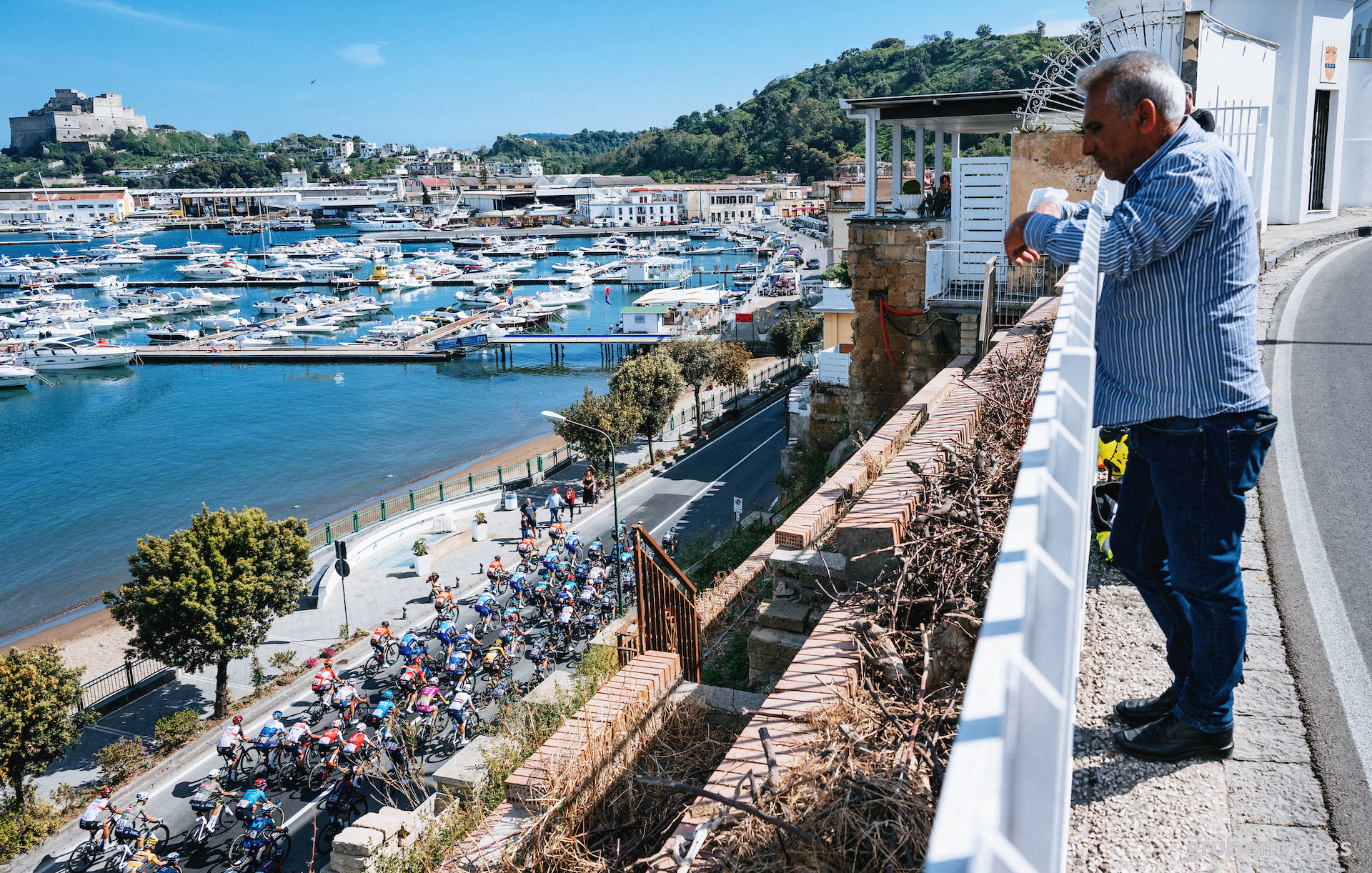Welcome to Grand Tour season, everybody! With the Vuelta Femenina already underway in Spain, the Giro d’Italia is about to get going in Italy. We already have our race preview up to tell you everything that you need to know about the route and contenders, but on such a joyous occasion as this, there’s so much more to tell you. Specifically, we want to present you with a small collection of things that you maybe didn’t realize that you need to know about where this Grand Tour will take the peloton, and, at least in spirit, all of us too.
Let’s start by acknowledging the absurdity of trying to fit the cultural notes on a race that spends three weeks in Italy into one article. Italy’s history and culture are foundational to “western civilization” as a whole. Ergo, this isn’t about trying to tell you everything you could possibly know about Italy. It’s about curating some particularly intriguing pieces of knowledge that you didn’t know you needed to know in connection with the route, while accepting that there will be plenty more to talk about in stories like this one for years to come.
With that out of the way, let’s dive in to a cultural notebook for the 2023 Giro d’Italia!
Week one
The 2023 Giro gets underway in Abruzzo, which is generally considered part of southern Italy even if much of the region is geographically to the north of parts of the Lazio province, which is not considered southern Italy. It’s a cultural thing, really.
Abruzzo presents a great opportunity to sip some geographically relevant wine as you enjoy the opening stages. It is the epicenter of one of Italy’s most popular wine grapes, and yet one that does not have nearly the global cache of something like the Sangiovese (the main grape of Chianti wine). That makes this a great candidate to get some love in a cultural notebook like this one. It’s called Montepulciano, and the wine it produces, most notably with the denomination of “Montepulciano d’Abruzzo,” is a balance of red and dark fruit flavors, with a medium-to-bold body and medium-high acidity. Compared to wines from Tuscany or Piedmont, it’s also often a bit cheaper, which is always a plus.

Confusingly, there happens to be a village in Tuscany also called Montepulciano that also produces wine, but predominantly with the Sangiovese grape and not the Montepulciano grape. If you’re looking for the Montepulciano grape on a wine list, you know you’re getting it if you see “Montepulciano d’Abruzzo,” whereas anything “di Montepulciano” is from the Tuscan village far from Abruzzo. The confusing stuff is what makes this fun, really.
The Abruzzo region is also home to a small population of a creature you may have heard of without realizing it: the chamois. It’s a member of the goat-antelope family and the soft leather derived from its skin gave its name to the padding of the earliest cycling shorts, now generally synthetic instead. The more you know!
Moving ahead a few stages, the Giro will roll into the Campania region and visit places like Salerno, Naples, and Capua, all of which have been major population centers for quite literally thousands of years. Naples and Capua in particular were bustling Greek ports in what came to be known as Magna Graecia, a collection of Greek colonies on the Italian peninsula that would eventually come under Roman influence.
Reminders of this ancient past are everywhere. The “Centro Storico” (historic center) of Naples, the city that hosts the stage 6 finish, is a UNESCO World Heritage Site. The narrow streets retain their original layout from the Greek period, and the remnants of Greek and Roman ruins are scattered among medieval buildings. Just outside of Naples, you can see what remains of the Roman town of Herculaneum, which was, like nearby Pompeii, destroyed when Mount Vesuvius erupted in 79 CE.
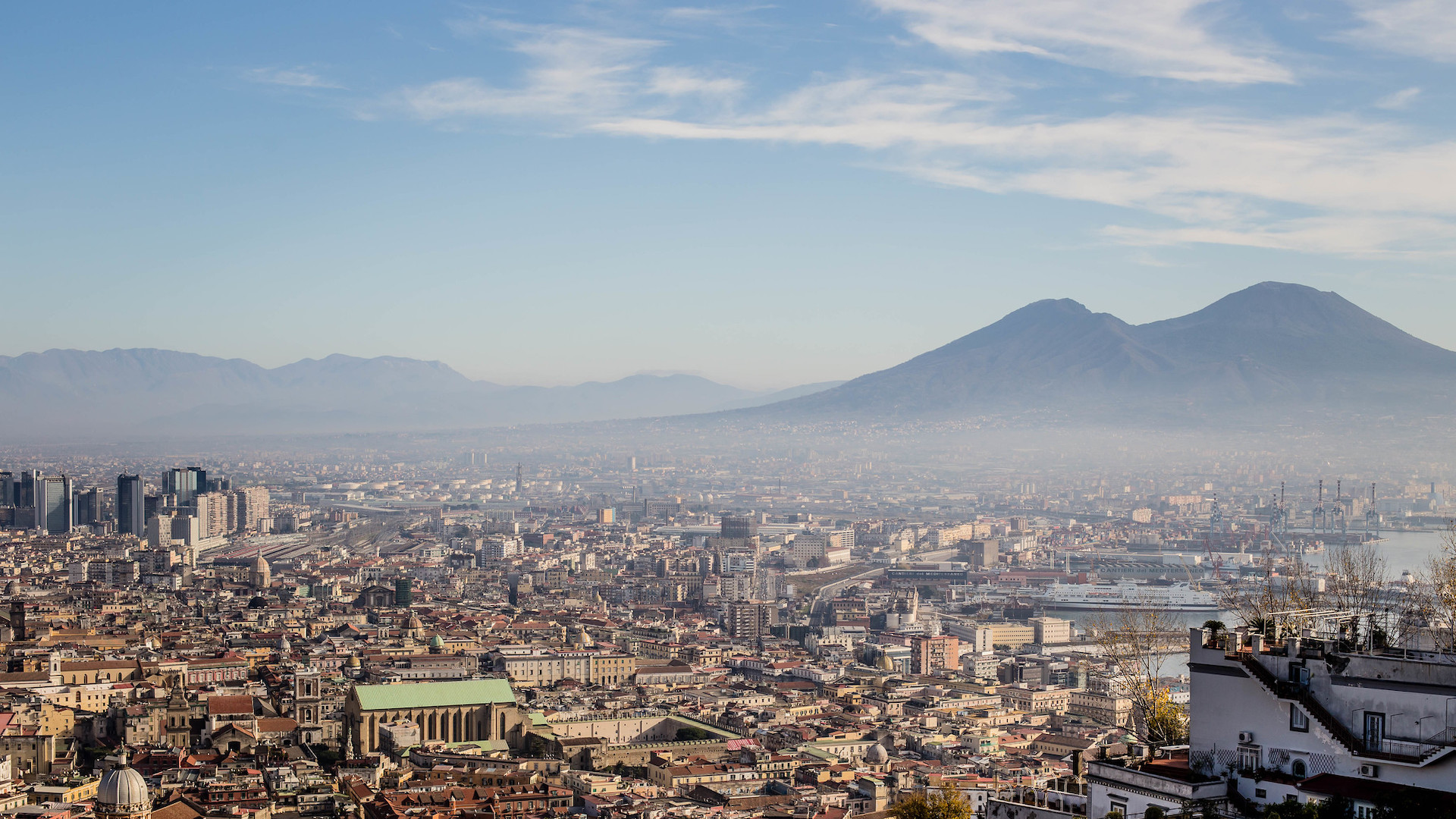
From a food perspective, stage 6 is also your best excuse in this race to eat the wonderful delicacy that is … pizza! People have been putting oil, spices, and cheese on flat bread for a long time, but Naples is the progenitor of pizza as we know it today, dating back roughly two centuries. Tomatoes, being a New World item, only came to Italy in the 1500s. A few centuries after that, people started using tomatoes to add flavor to flatbreads, and sooner or later, the pizza was born.
Italian emigrants to other parts of the world, of whom the vast majority were from the south of Italy, brought their relatively newly invented dish with them, leading to its emergence as one of the most popular foods in the western world. The quintessential Neapolitan version is the Pizza Margherita, made with San Marzano tomatoes (grown right there in Campania), mozzarella (from the milk of the Italian buffalo), and extra virgin olive oil, seasoned with basil and salt.
Considering Campania’s population of nearly a million people and its central importance to Italian history into the medieval and early modern periods and recent past, a writer could fill multiple books telling you about all the interesting things that have happened there, but we’re curating here so we’ll just have to save some for the next Giro visit! For one last note on the region’s ancient history: stage 7 starts in Capua. To the northwest of the modern city are some fascinating ancient ruins, including a spectacular Roman amphitheater whose size is rivaled only by the Colosseum in Rome, as well as an ancient Mithraic temple.
From there, the Giro will head northward. On the way, it will pass through the town of Savignano sul Rubicone, and I’d be a bad history nerd if I didn’t explain the name of the town. Just over two millennia ago, in the year 49 BCE, a general named Julius Caesar had just conquered Gaul when the Roman Senate told him to come home with his army disbanded in accordance with the law, which forbade commanders from leading armies into Italian territory.
Caesar, who may have been staring down the possibility of facing charges for various crimes upon his return, decided to do something else: He marched into Roman territory with his army, officially entering the province of Italy when he crossed over the river Rubicon. Thus began a bloody civil war which led to his being named dictator, changing the course of history.
He was traditionally said to have stated “the die is cast” upon deciding to cross the river, a phrase that, along with the phrase “crossing the Rubicon,” is now part of our modern lexicon. We don’t actually know where the crossing happened exactly, and the river’s course has changed over time, but after 20th century historians deduced that a small river near the town of Savignano di Romagna was perhaps the site of the ancient Rubicon, Italian dictator Benito Mussolini renamed it Savignano sul Rubicone (Savignano on the Rubicon), the name it bears today.
Week two
After the first rest day, the race will briefly go through Tuscany in stages 10 and 11 and then head into Piedmont. With that in mind, we’ll save the paragraphs upon paragraphs that we might have written on Tuscan wine and Renaissance artists for some other time!
Instead, let’s dive straight into one of my favorite wine grapes. Piedmont is the home of Nebbiolo, and the Giro will pass within a few dozen kilometres of the two most famous Nebbiolo-producing regions – Barolo and Barbaresco – on stage 12. The grape is unique in many ways. Pour it into a glass and you’d think you were about to enjoy something like a pinot noir, because Nebbiolo has a beautiful translucent red color. Unlike pinot noir, however, it is a very tannic dry red. It tends to be pretty strong too, often pushing into 15% ABV. It does have a strong red fruit flavor, but one that is complemented by hints of dusty leather and sometimes licorice. It’s not for everyone, but everyone should try it!
If you want to pair your Nebbiolio with some Piedmontese cuisine, agnolotti is a popular dish of the area; a ravioli-esque food that is traditionally stuffed with beef. Or skip straight to the sweets: Piedmont is the place to go for good panna cotta, and it’s also where Nutella was first made and where the company that makes the spread is still based today.
From a historical perspective, stage 12 finishes near Turin in Rivoli, home to the historic Castello di Rivoli. Originally constructed around the year 900 CE, it became a headquarters of the House of Savoy, which started acquiring territory in the region in the High Middle Ages and grew into one of the most powerful dynasties of early modern Europe and beyond. A branch of the family was the leading dynastic force in Italian unification in the 19th century, with Savoy kings then reigning to the end of the Italian monarchy. As a Savoy stronghold, the Castello di Rivoli has constantly been refurbished over the centuries. These days, the palatial residence is also an acclaimed art museum.
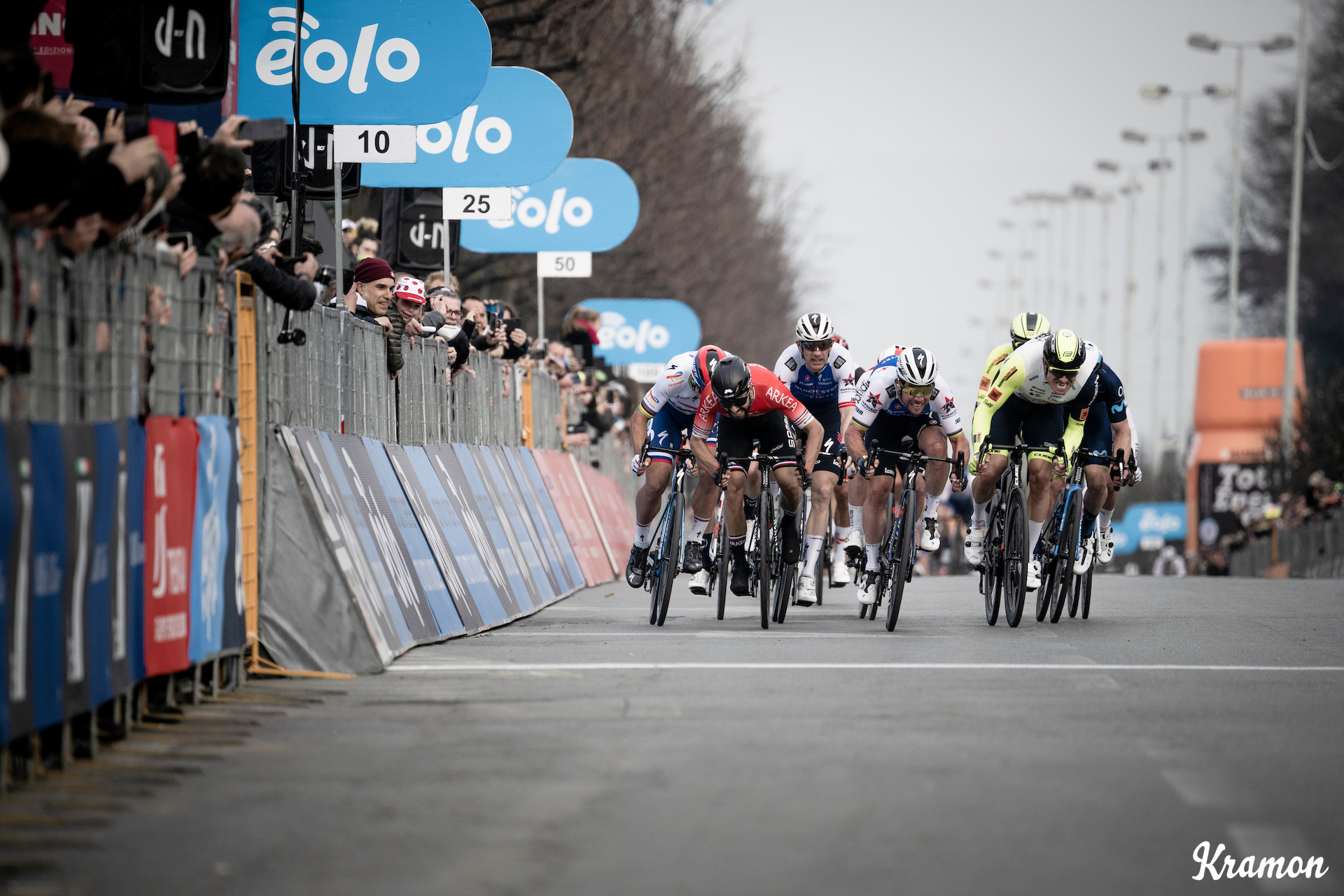
Stage 13 will briefly take the Giro d’Italia into a whole different country: Switzerland. Specifically, it will visit Crans Montana in Valais. On the way, it will pass by the town of Sion and its truly spectacular medieval architecture. On two hills that rise above the town are the Valère Basilica and Tourbillon Castle. The former saw its first phases of construction in the 1100s and was then enlarged into a mighty fortified church in the Gothic style in the 13th century. Around that time, the imposing Tourbillon Castle was built on the facing hill. They’ll give the Giro peloton plenty of scenery to soak in before climbing on an otherwise brutal day on the bike, the Giro’s first stage with “five-star” difficulty.
The second week of the Giro will conclude in the Lombardy region, so named for the Germanic people who took over the northern half of Italy in the early Middle Ages – but since there’s a Monument that still carries the memory of their name, let’s leave it at that for now and pencil in a return to Lombard history nerd-ing later this year when the leaves begin to fall. It’s time for the second rest day, and then the race will continue its eastward trek.
Week three
Much of the racing in the final week takes place in the Veneto region, another place travel writers and historians could write volumes and volumes on, but where we will hone in on a few highlights. First, let’s refuel. Bigoli is the pasta perhaps most associated with the region. It looks like a thick spaghetti, and it can be accompanied by all manner of proteins and sauces. Ravioli is also popular in Veneto, and if you want some dairy to complement your viewing, stage 17 passes near the heartland of asiago cheese.
On the historical and sightseeing side, this part of Italy has a legacy of independence, centered on Venice, which was an extremely wealthy republic in the Middle Ages. Stage 17 passes through the Venice suburbs and finishes in Caorle. A prosperous city in the medieval period, it is the home of St. Stephen Cathedral, which is almost a thousand years old. Its beautiful bell tower rises high above the town, a better advertisement for history-minded tourists than any billboard could be.
Stage 18 will take the peloton along the border of the Friuli-Venezia Giulia region, and you’ll find plenty of vineyards nearby. This northeastern corner of Italy is the home of Italy’s most famous sparkling beverage: Prosecco. The Prosecco grape (also called the “glera” grape) is most famously used to make sparkling white wines. It takes its name from the town of Prosecco near Trieste, but it is grown in both Veneto and Friuli-Venezia Giulia. The race will pass about 40 km from Valdobbiadene and Conegliano, home to the most prized Prosecco around.
Stage 19 starts in the town of Longarone, a place with a tragic recent history. Nestled in the Alps, the town was the site of a huge dam project completed in 1960. Three years later, a landslide into the reservoir displaced a huge amount of water, which reached 250 meters above the dam and then crashed down onto part of nearby Longarone with incredibly destructive force. Some 2,000 people were killed in the disaster. The 2013 Giro d’Italia would visit the area 50 years later in commemoration of the victims, and it is back again in 2023.
Both stages 19 and 20 will climb high into the mountains towards well-known destinations for outdoor activities. Stage 19 finishes in the Dolomites on the border of Veneto and Trentino-Alto Adige at Tre Cima di Lavaredo. The mountaintop saw Vincenzo Nibali put an exclamation point on his triumphant 2013 Giro d’Italia with a stage victory.
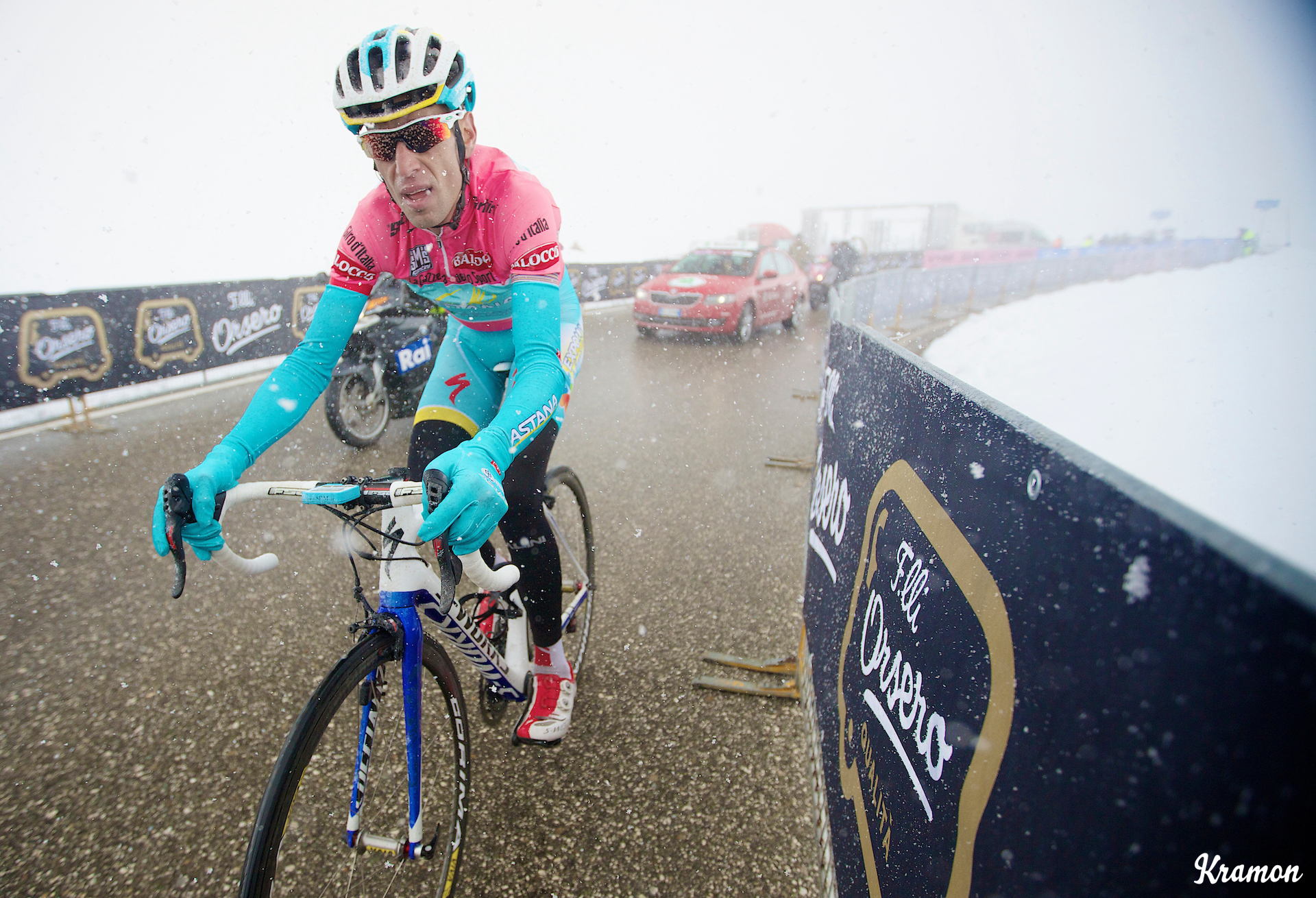
Tre Cima di Lavaredo is also a popular place to hike. About 160 km to the east in Friuli-Venezia Giulia is Monte Lussari, a popular skiing destination, where the stage 20 time trial ascends into the Julian Alps. Whether you’re cycling, hiking, or skiing in this part of Italy, among the animals you might see up there is the aforementioned chamois. Who knew?
At last, after 20 days of racing, the Giro peloton will leave northeastern Italy and hop over to Rome in the Lazio region for its final stage. The Italian capital showcases just a few historical sites. People dedicate their lives to studying Roman history, but I’ll limit things here to just saying this: its hardly a surprise that a city that left such a legacy from its traditional founding in 753 BCE (though people have lived there far longer) through its traditional “fall” in 476 CE (though that’s a gross oversimplification) and well beyond is indeed one of the most popular tourist destinations on the planet. Its massive Colosseum and spectacular ruined Forum, along with baths and aqueducts, are instantly recognizable symbols of the city’s ancient past.
As the Giro peloton processes around Rome in preparation for an expected sprint finale, this is your chance to dive into some Carbonara: pasta with eggs, cheese, pork, and pepper. Make it Pecorino Romano cheese to be as geographically relevant as possible. A hard cheese derived from sheep’s milk, it has been around far longer than Carbonara. Roman soldiers ate it as part of their daily meals. These days, it is largely produced in Sardinia and not Lazio, but the Italian capital is its traditional home, and it is very popular as a key ingredient for a variety of modern Roman dishes.
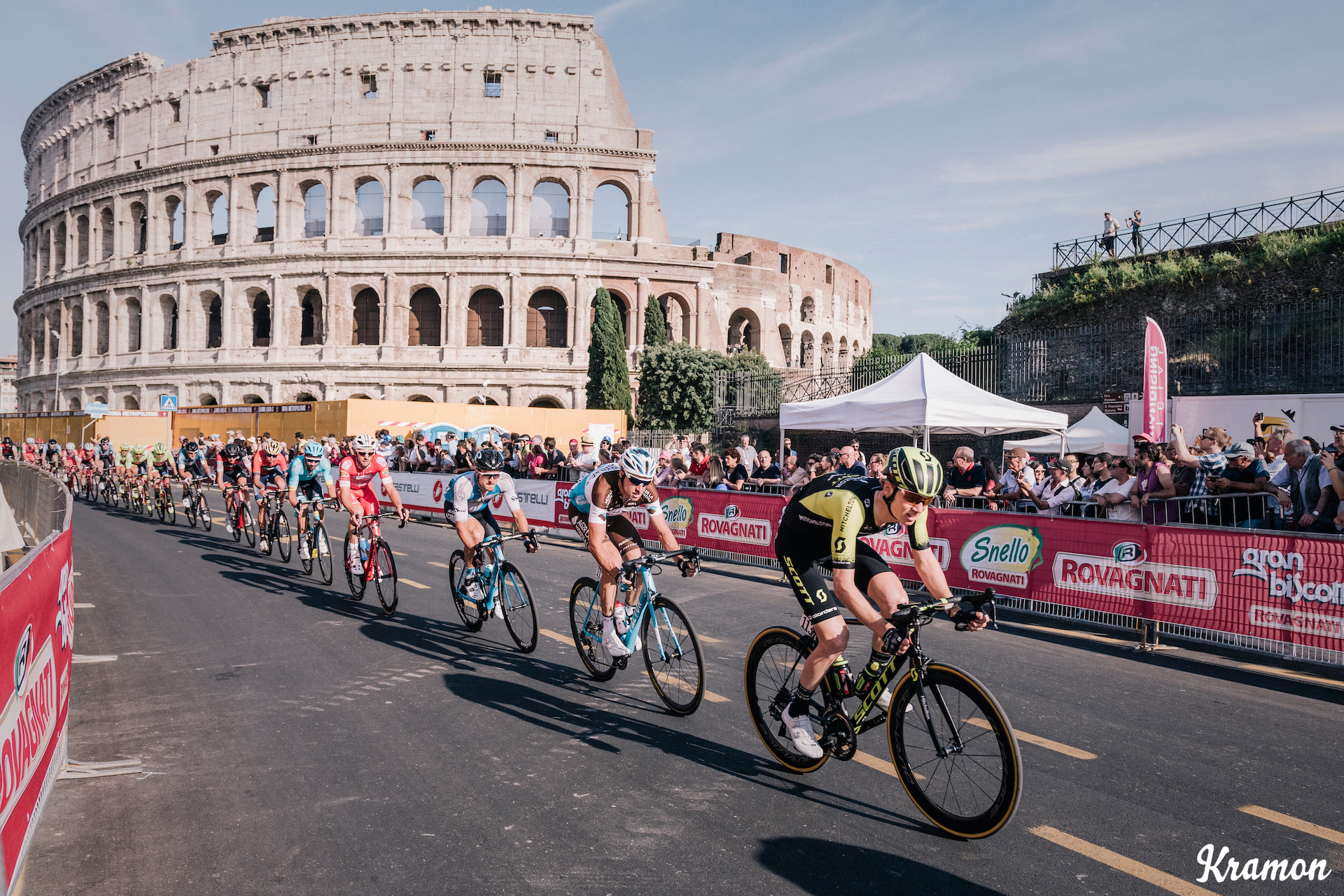
That’s three weeks’ worth of cultural notes you’ve just made it through. If you’ve gotten this far, you should treat yourself to some gelato, or make it an affogato (ice cream with espresso) if you need a caffeine boost. After all, the 2023 Giro d’Italia is upon us. You’ll want to be awake for the next three weeks of drama, beauty, and racing action. Enjoy!
Did we do a good job with this story?
